Behind ALMA’s Operations Support Facility’s Technical Building is the large antenna testing area. Here two North American ALMA antennas are undergoing final testing, while a third has passed and is being readied for a haul up to the array on the back of a Transporter.
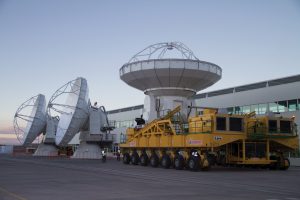
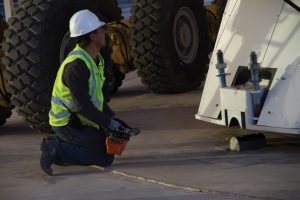
Remote Controlled Monster Truck
This man is driving a 28-wheeled monster truck — by the little remote control device in his hands. He is one of only a few drivers in the world who has been trained to control an ALMA Transporter. Besides driving it, he has to carefully control how it clamps and lifts an ALMA antenna on to its back. Here, he is carefully watching an ALMA antenna being slowly lifted from its mount at the Operations Support Facility in northern Chile.

Flying Saucer or ALMA dish?
A 12-meter North American ALMA dish is raised from its construction platform by a ceiling crane inside the Vertex Assembly Building at the ALMA Operations Support Facility in northern Chile. It was then driven to and lowered onto a telescope base. From below the rounded shape of the dish resembles a fly saucer.
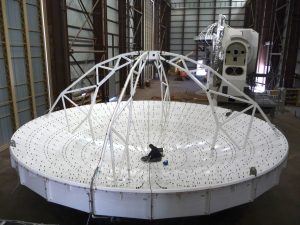
Dish Assembly at ALMA
Inside the Vertex Assembly Building in northern Chile, a General Dynamics engineer readies this North American ALMA dish for attachment to its base.
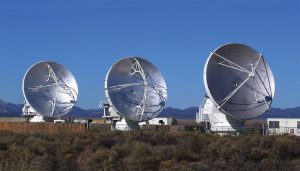
ALMA Prototype Antennas
At the Very Large Array site in New Mexico, the international partners in ALMA assembled and tested their 12-meter prototype antennas. From left to right: Japanese, North American, and European.
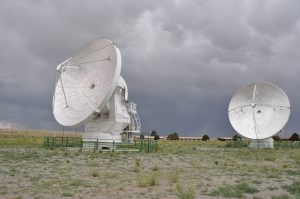
Two Prototype ALMA Antennas
The European and North American prototype ALMA 12-meter telescopes sitting outside the Control Building of the Very Large Array (VLA) where they were tested. The Japanese prototype is not present at the time of this photo, as it had been accepted into the array as the first telescope of ALMA.





